Bare Metal Cloud vs. Dedicated Servers

Knowledge blog
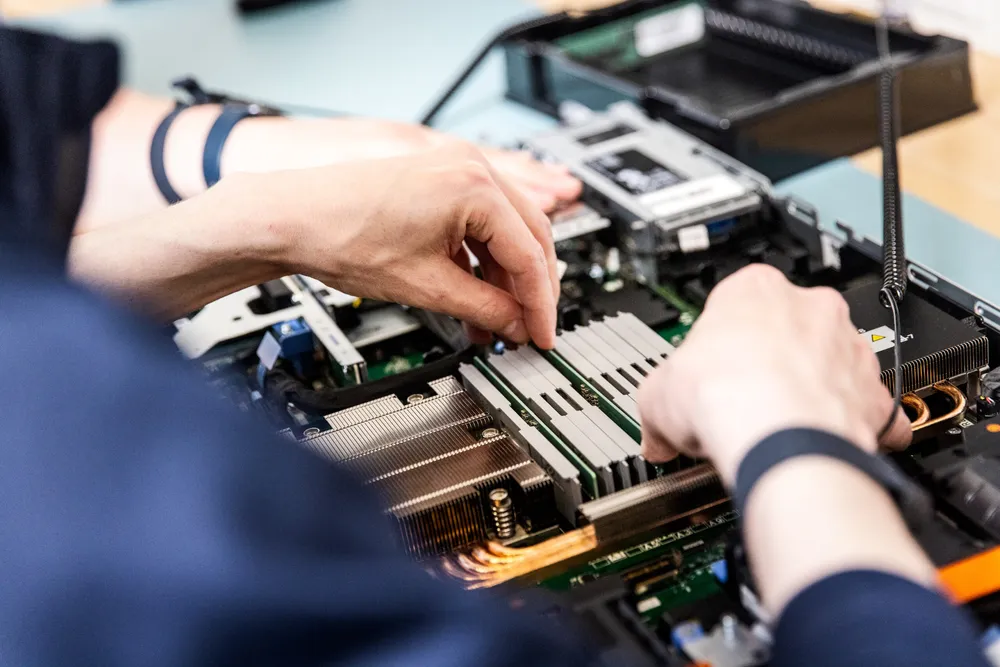
Dedicated hardware as provided by bare metal or dedicated servers is usually the greatest option if you’re looking for high levels of compute power, security, and privacy. The cloud, on the other hand, is known for its flexibility, scalability, and functionality. But what if you could combine the benefits of both?
Making the right decision between cloud, bare metal, and dedicated servers
Let’s start by adding some explanation to the terms dedicated server and bare metal. These terms are used interchangeably in the market, although they could refer to different types of servers.
With dedicated servers, users pay a monthly recurring fee to receive access to dedicated hardware that’s fully at their disposal. On this server hardware they can deploy all kinds of business applications, high-profile websites, or other compute-intensive web-facing operations such as ecommerce platforms, streaming services, private cloud, high performance computing (HPC), Voice over IP (VoIP), online gaming, or for example mission-critical databases.
The server hardware being used for dedicated hosting is usually equipped with a variety of computing components. Key server components that are part of these servers include the processor, also called CPU (Central Processing Unit); its memory, also known as RAM (Random Access Memory); as well as hard disk drives (HDDs), or solid-state drives (SSDs), whichever is preferred.
The processor is at the heart of the server system, representing the brain of the server machine. The quality of RAM for example may determine the loading time of a webpage or business application while it is also a component allowing the processor to execute its functions properly. When compiling the exact components of a dedicated server, often HDD versus SSD can be chosen for storing data. The main benefit of SSDs is their performance with significant higher read/write speeds, while its energy consumption is also lower than would be the case with HDDs. In terms of cost, traditional hard disk drives still have a massive advantage over SSDs when vast capacity of storage is needed.
Bare Metal Servers
When talking about ‘traditional’ bare metal, these are just regular dedicated servers that run a user-administered operating system (OS) like Ubuntu, CentOS, AlmaLinux, Debian, VMware, or Windows. With a ‘traditional’ bare metal server, the operating system is being used to execute all user applications. So, in that case, there’s no actual difference between bare metal and a dedicated server, the term that we’ve known for quite a long time already, since about the beginning of the Internet age. Later on, the term bare metal was introduced. In the market you may encounter these terms interchangeably.
Bare metal that takes use of hypervisors on the other hand, with virtualization software installed directly on the server hardware, allows for cloud-like, automated deployments of dedicated servers. Unlike traditional bare metal servers, this type of bare metal can be available on-demand as well as delivered by using usage-based billing. This kind of bare metal, like a dedicated server or traditional bare metal server, does not share hardware system resources with other users. But quite often it’s referred to in the market through cloud-like expressions instead, with terms like bare metal cloud or bare metal instances.
Servers Deployed in Data Centers Worldwide
Traditional dedicated servers, also known as bare metal, can be deployed in data centers worldwide. Depending on its use case and desired geographical reach and application, but also dependent on the availability of solid (inter)connectivity options, users can have these dedicated or bare metal servers deployed anywhere on the planet and get access to the server hardware remotely.
Worldstream, for instance, has its bare metal hardware located in network-dense data centers in the Rotterdam/The Hague region in the Netherlands, as well as in other Internet connectivity hubs such as Amsterdam and Frankfurt. As these data center locations are smartly chosen from a connectivity perspective, while we also have a proprietary, high-speed and low latency global network available, customers from all over the world know how to find us. They can have these dedicated servers fully customized according to their needs, select all different kinds of components when compiling the server system, and get access to their servers remotely. It’s possible to have this server hardware deployed from a distance, as Worldstream’s expert engineers are available 24/7 with average response times of only 7 minutes.
Dedicated servers can be offered managed or unmanaged. While Worldstream offers its dedicated servers unmanaged aimed at tech-savvy users, many service providers worldwide offer managed dedicated servers instead. Talking about an unmanaged dedicated server, this type of server is usually less expensive since you are solely responsible for managing the operating system and all programs, from installation to setup. To be able to distribute updates, run backups, and take other steps to keep your server and data safe and secure, you’ll need true system administrator abilities.
Talking about a managed dedicated server, it involves the hosting provider installing software, delivering updates, doing backups, and a variety of other chores that must be completed on a regular basis to keep the server working smoothly.
Bare Metal Cloud
When discussing bare metal cloud, there’s a virtual/cloud-like decoupling of the server functions and the underlying hardware, creating a combination of the raw power of dedicated hardware with the agility offered by virtualization. Although every IT environment uses physical hardware, whether for cloud, virtual machines, or public cloud, there are differences in how these software-based solutions interact with the underlying hardware, including multi-tenancy versus single-tenancy in virtualized solutions.
Bare metal cloud usually involves a single-tenant server, with resources of a particular server machine not shared with other users, unlike public cloud which is typically a multi-tenant environment. Additionally, the server functions are decoupled from the underlying hardware while still maintaining a direct connection between these functions and the server hardware. However, bare metal cloud does not necessarily involve virtualization of the server hardware. Users of bare metal cloud typically have full control over the physical metal hardware of the server, hence the term “bare metal.”
When properly executed, bare metal cloud will differ from dedicated servers and virtual machines. Virtualization is achieved through the use of a hypervisor, a software layer that runs virtual machines on a host server machine while allocating processors, memory, and storage to the virtual machines individually. So, virtualization allows multiple VMs to run on a single server host, each with its own operating system, processor core, RAM, storage, and network. The hypervisor connects the virtual machines to the server hardware on which they run.
Bare Metal Hypervisors vs. NFV
Bare metal cloud infrastructure is usually designed by using Type 1 hypervisors. A Type 1 hypervisor, often known as a native hypervisor, is virtualization software that operates directly on the hardware of the host server machine. In that case, the bare metal hypervisor is the hardware’s host or operating system (OS). To put it differently, a bare metal hypervisor may directly access the resources of dedicated hardware without first loading an underlying operating system. It’s different from for example an NFV/SDN technology approach where virtualization takes place on the network level, as adopted/developed by Worldstream. With the use of type 1 hypervisors, a virtualization layer will be added on the server hardware level. Examples of Type 1 hypervisor technologies include Microsoft Hyper-V Server, VMWare ESXi, Citrix XenServer, Oracle VM, and open-source KVM. Quite different, the NFV/SDN-based technology used by Worldstream provides for virtualization on the network level, adding to the agility of all kinds of IaaS infrastructure options including bare metal/dedicated servers but also firewalls, storage, private cloud, and more.
Although Type 1 hypervisors as a means of deploying bare metal cloud infrastructure are widely used in the market, this technological approach can have its drawbacks. Admitted, a type 1 hypervisor is faster and much better in terms of latency than a Type 2 hypervisor since it communicates directly with the server hardware. The operating system and various layers that generally limit the capabilities of hosted hypervisors are not present within a Type 1 hypervisor-based setting. So, Type 1 hypervisors are not constrained by the fundamental limits of operating systems (OSs). Hence, in theory they can offer high performance.
Then again, a Type 1 hypervisor does have its drawbacks when it comes to establishing high-performant bare metal cloud infrastructure. To administrate various virtualized bare metal cloud instances and control the host hardware, a Type 1 hypervisor frequently requires a separate management system, which can make it less agile and less flexible to deploy than for example the use of network-based virtualization that comes with SDN/NFV technology. To access the full range of hypervisor’s capabilities, the standard Type 1 hypervisor for example requires the use of VMware vCenter or Microsoft System Center Virtual Machine Manager. In this case, the separate management system instructs different virtualized bare metal machines while it controls the host hardware resources, making it unnecessary complex in terms of overhead and maintenance.
SDN/NFV technology enables service providers to limit their reliance on single-purpose appliances by integrating formerly hardware-based functions into software that runs on regular servers, network equipment, and storage systems. This significantly adds to the efficiency and agility of bare metal as well as an IaaS setup in its entirety. SDN/NFV provides for greatly reduced complexity and time-to-market involved with deploying and managing IaaS including bare metal services. When properly designed, SDN/NFV also offers increased programmability in the network, allowing for seamless connection and integration of all kinds of infrastructural solutions, meeting the hybrid IT and multi-cloud needs of organizations.
Powered by SDN/NFV, Worldstream for example has designed a software-defined network and based on that various Infrastructure-as-a-Service offerings that can easily be combined, including dedicated servers/bare metal, private cloud, block storage and object storage, firewalls, cloud on-ramps, and more. Supported by this SDN/NFV powered platform, service providers are also equipped to add/develop their own agile dedicated server/bare metal offerings and accompanying infrastructural solutions.
Key Differences Bare Metal Cloud vs. Dedicated Servers
The server hardware of traditional bare metal servers and dedicated servers is essentially the same. However, bare metal cloud is different as it involves a different delivery model by service providers and faster deployment, made possible by the separation of server functions from underlying hardware.
Traditional dedicated servers were once associated with long lead times for server hardware deployment. If you need to scale fast as a company, or when you just want to start quickly with the hosting of your digital operations, that’s not a very appealing idea. With the increasing popularity of cloud usage in organizations, including private, hybrid, and multi-cloud, slow deployment times can lead to an undesired bottleneck in IT infrastructure commissioning. Cloud instances, on the other hand, can be spun up within seconds. Although some service providers have improved the speed of delivery for their dedicated servers, traditional dedicated servers still lack the cloud-like qualities of fast deployment. Worldstream, however, offers ultra-fast delivery times for many of its dedicated server/bare metal offerings.
As stated earlier, a cloud-like service delivery model can be effectuated in a more traditional way by using Type 1 hypervisors, while SDN/NFV technology may offer a network-based thus ‘next-generation’ delivery model that’s even more adapted to the currently in demand hybrid cloud and multi-cloud setups.
To summarize, here are the main differences between bare metal cloud and traditional dedicated servers/bare metal offerings:
Automation of provisioning – Bare metal cloud offers cloud-like agility in terms of provisioning, while still preserving raw compute power. It allows for automated provisioning, thus catering to flexibility needs while fitting hybrid cloud setups. With traditional dedicated servers, the level of automation with regard to server hardware provisioning can be limited while there’s still some manual engineering labor involved. Worldstream’s SDN/NFV powered network provides for virtualization on the network level instead, allowing to create agility for the IaaS components in its entirety.
Deployment speed – Bare metal cloud deployment can be very fast due to high automation levels, making it a good fit for hybrid and multi-cloud setups. Traditional dedicated servers are still successfully used for these setups, especially when combined with Worldstream’s SDN/NFV network and infrastructural solutions.
Infrastructural performance – Bare metal cloud and traditional dedicated servers offer raw server hardware power, with varying specs depending on the model. SDN/NFV technology can add to the performance, latency, security, and agility of bare metal offerings.
Manner of infrastructure utilization – The idea behind bare metal cloud is that you can provision workloads on server hardware and subsequently treat them as cloud instances. Type 1 hypervisor-based bare metal servers will give you flexibility on the individual server level, while SDN/NFV technology – as developed by Worldstream’s R&D – will provide you with ultimate flexibility options on the network level thus within a broader IaaS perspective. It will add instant infrastructure scaling and relocating functionality. The ability to move workloads in real-time. To name a few. Its possibilities are infinite.
Bare Metal Cloud, Wat Are Its Use Cases?
When it comes to traditional dedicated server/bare metal offerings, the server you rent provides exclusive access to raw computing power that isn’t shared with anyone else. These types of servers have numerous use cases, such as achieving high uptime and security for applications or handling high-volume mission-critical applications that require high availability and performance.
With bare metal cloud offerings, you still rent a physical server that’s not shared with anyone else, but the level of automation for provisioning and the ability to instantly scale up and down make a significant difference. While an SDN/NFV-technology powered network with associated virtualization of IaaS components allows for agile, cloud-like deployments as well, bare metal cloud can boost agility and be an ideal fit for the following use cases:
Cloud-native IT infrastructure – Organizations are increasingly using cloud-native technologies to create and run scalable applications in dynamic settings including public, private, and hybrid clouds. This approach is exemplified by containers, microservices, service meshes, and declarative APIs. Running it on bare metal cloud might accelerate the dynamic features of these technologies and workloads.
Resource intensive workloads – Cloud gaming, telecom, driverless cars, augmented/virtual reality, and video transcoding applications are some examples of use cases that require predictable performance. These are also latency-sensitive applications, while the associated workloads may demand dynamic handling. Bare metal cloud may provide for these needs from the server hardware perspective.
Stringent security and compliance requirements – Organizations in regulated sectors including finance, healthcare and governments may be required to comply with data localization regulations. While providing for public cloud agility, a bare-metal cloud instance may help ensure that data is always preserved at the same physical data center location.
Artificial intelligence and machine learning – To bring enhanced effectiveness and efficiency to organizations, AI and ML are increasingly being used to boost operations. Bare metal cloud infrastructure can offer the raw compute power as well as agility to help accelerate training and inferencing processes.
Real-time analytics – Sub-second response times are required for database-intensive activities. Such applications may include OLTP (online transaction processing), securities trading, and for example credit card fraud detection. Multi-tenant public cloud infrastructures can be unpredictable, resulting in unreasonable delays, whereas bare metal cloud can offer the required agility while still preserving the raw compute power with associated stability.
Worldstream's Bare Metal/Dedicated Server offering
Worldstream’s bare metal/dedicated server offering is powered by innovative SDN/NFV technology, providing network-level virtualization through its software-defined ‘Elastic Network’. But, Worldstream also offers several cloud-based solutions: private cloud and public cloud (WS Cloud), block storage, and object storage. Worldstream’s dedicated servers come in two flavors: fully customizable and fixed instant delivery configurations. The first is flexible as it’s completely customizable, which is perfect if you want to have a dedicated server delivered tailored to your bespoke needs. The latter are servers with a fixed configuration that are made for speedy delivery.
We have more than 15 years of experience with data centers, servers, and network management. The result is more than 15,000 dedicated servers distributed across our two data centers through our sister company Greenhouse Datacenters. Worldstream also uses sites in Frankfurt and Amsterdam. High-quality, flexible, and affordable IT infrastructure. Underscored by our very high Net Promoter Score of 74 (NPS/US) and a satisfaction rating of no less than 9.6.
Want to learn how our dedicated servers can help build your organization? Schedule a no-obligation brainstorming session with an account manager by mailing us here.
You might also like:
- Public Cloud On-Ramps are the key to hybrid and multi-cloud success.
- Choosing strategically between public and private cloud.
- When will you know if cloud computing complements your IT infrastructure?
Have a question for the editor of this article? You can reach us here.

Latest blogs
Worldstream and Nokia Join Forces for Next-Gen DDoS Protection

News
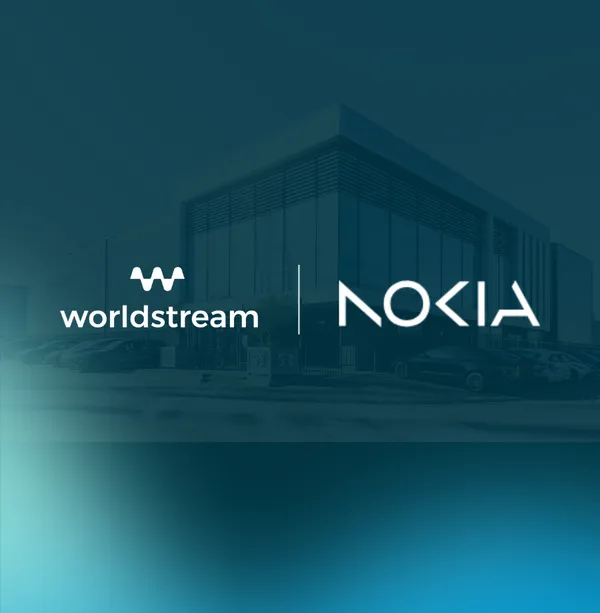
Worldstream unveils new positioning and offers customers more control over their digital infrastructure

News
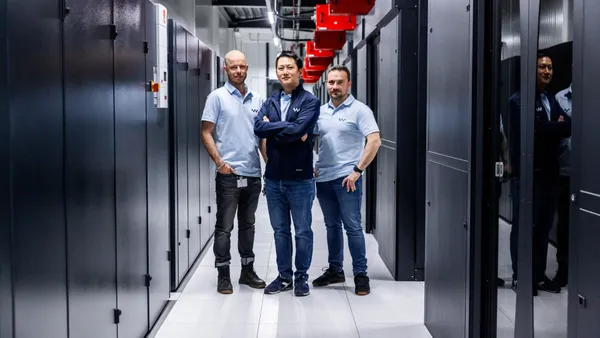
5th Gen AMD EPYC 9355P – Now Live at Worldstream

News
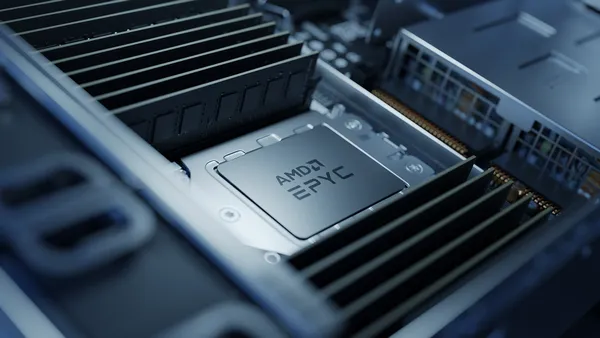
Nokia strengthens Worldstream’s hosting security with advanced DDoS Protection in the Netherlands.

News
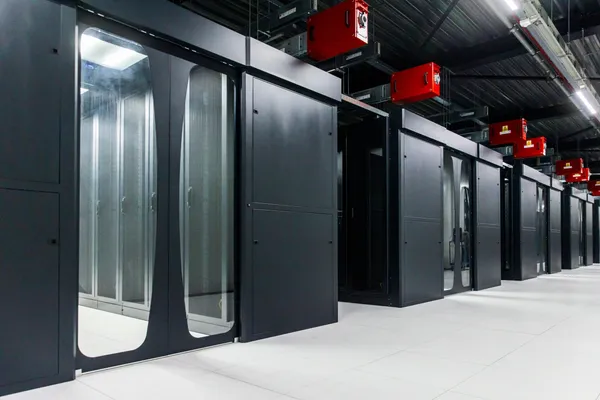
Server Clustering vs Dedicated Servers: Key Differences and Benefits for Your Business

Knowledge blog
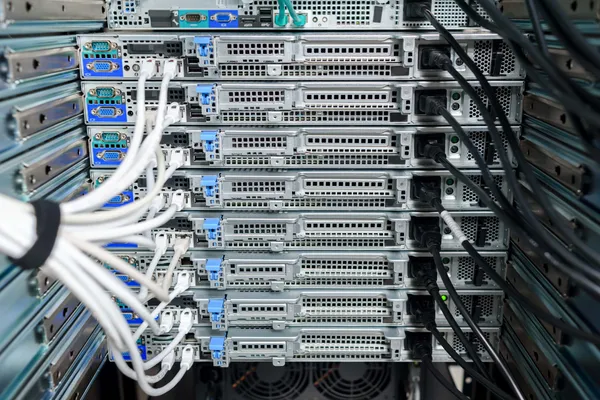
What IT leaders need to know about the Digital Services Act

Knowledge blog
